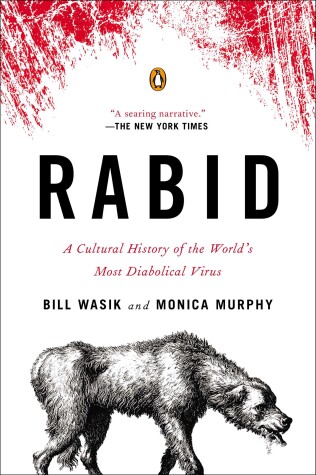A photo posted by @dvmheather on Sep 28, 2015 at 5:44am PDT
I've had this book forever and finally read it after a staff member starting insisting that she had rabies. A stray cat bit her and died a few days later. (In my mind there is an equal chance that the staff member was poisonous to the cat.) The cat was tested and was rabies-free so all was well for the humans involved. It didn't change things for the cat.
The first few chapters caused mass giggling in my office.
First up this is description of how Louis Pasteur collected saliva to use in developing his vaccines.
".. watching Pasteur perform this trick with a glass tube held in his mouth, as two confederates with gloved hands pinned down a rabid bulldog."
My confederates can't hold a mildly pissed off cat with gloves on sometimes. I pointed this out to them. They pointed out that the next paragraph discusses how they had a loaded gun on hand in case someone got bit. They postulated that they could shoot me and get a new job if I tried to get them to do something as stupid as holding a rabid bulldog.
Next it discusses getting the head removed from a rabies suspect.
"The first part of that process -- capturing and humanely dispatching a deranged animal -- is fairly standard stuff for your local vet."
Well, thanks for the vote of confidence but, yeah, no. Not routine. At least not the deranged animal part.
"If the vet is lucky, her hospital has seen enough suspected rabies cases that it has thought to keep a hacksaw handy."
Lucky? Is that her definition of lucky? Where does this woman practice? I think I'm lucky in that I'm not handling rabies suspects every day.
One of my favorite vet school memories though involves putting a head back on after the brain was tested. I was in my pathology rotation and someone had mistakenly told the owners of a large dog that they could have the body back in pristine condition after the brain was removed. The pathologists were furious but couldn't say no after it was promised. I was just learning to quilt so I volunteered and spent an afternoon hand sewing a head back onto a body. I matched points and gathered as needed. The hair laid over the sutures to hide it. He looked amazing, if I do say so myself.
Anyway, back to the book. I liked the chapters about the medical aspects of the disease even if some of them made me doubt my medical training.
"Dogs, (Aristotle) wrote with an odd confidence, suffer from only three diseases: lyssa, or rabies; cynanche, severe sore throat or tonsillitis; and podagra, or gout."
Well, there's four years of my life in vet school wasted if that's all they get.
Other portions of this book discuss the idea that fear of rabies inspired the legends of the werewolf and the vampire. I wasn't as interested in those aspects as the medical ones. Your experience may be different.
The end discusses a rabies outbreak started when someone smuggled a dog that ended up having rabies onto the previously rabies-free island of Bali in 2008. The government's first response was to order all dogs killed but of course, people hid their pets so that didn't work. Vaccination protocols were set up to contain the disease. And that's why governments don't let you just bring pets into their countries just willy-nilly, even if you are a celebrity and think that laws don't apply to you.
This review was originally posted on Based On A True Story
